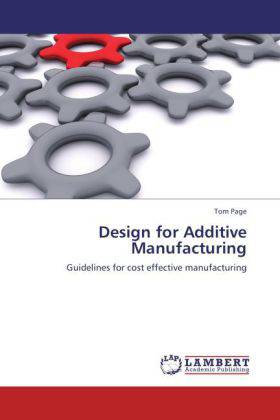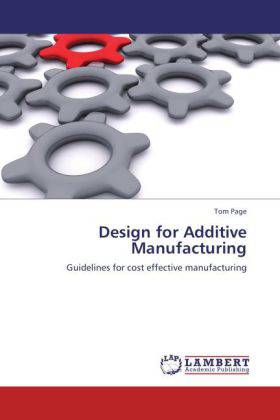
- Afhalen na 1 uur in een winkel met voorraad
- Gratis thuislevering in België vanaf € 30
- Ruim aanbod met 7 miljoen producten
- Afhalen na 1 uur in een winkel met voorraad
- Gratis thuislevering in België vanaf € 30
- Ruim aanbod met 7 miljoen producten
Zoeken
Design for Additive Manufacturing
Guidelines for cost effective manufacturing
Tom Page
Paperback | Engels
€ 48,45
+ 96 punten
Omschrijving
Additive Manufacturing is a new manufacturing method which adds material layer-by-layer to produce an object. This report set out to investigate a number of questions relating to Additive Manufacturing and its implications on current design practice, products and users. An introduction to Additive Manufacture as a process and how it has evolved from Rapid Prototyping is given. This report documents the Design for Manufacture constraints which Injection Moulding, a traditional manufacturing method, incurs and gives details of why most do not apply to Additive Manufacturing. The main freedom of traditional constraints comes from the nature of Additive Manufacturing being tool-less and therefore considerations such as constant wall thickness and non-undercutting geometry are not applicable. New constraints when 'Designing for Additive Manufacture' are given and explained including the need to remove support material or excess resin from within hollow geometry. Further still this report investigates consumer awareness and reception to Additive Manufacture through primary research in the form of a questionnaire - the first research of its kind into this topic.
Specificaties
Betrokkenen
- Auteur(s):
- Uitgeverij:
Inhoud
- Aantal bladzijden:
- 60
- Taal:
- Engels
Eigenschappen
- Productcode (EAN):
- 9783847322948
- Verschijningsdatum:
- 5/01/2012
- Uitvoering:
- Paperback
- Formaat:
- Trade paperback (VS)
- Afmetingen:
- 152 mm x 229 mm
- Gewicht:
- 99 g

Alleen bij Standaard Boekhandel
+ 96 punten op je klantenkaart van Standaard Boekhandel
Beoordelingen
We publiceren alleen reviews die voldoen aan de voorwaarden voor reviews. Bekijk onze voorwaarden voor reviews.











